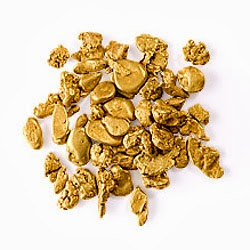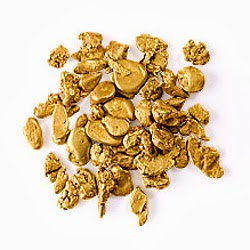Monday, February 19 2024
Gold is generally considered a time-tested safe-haven asset, the price of which has historically held up well in times For those of us afflicted with gold fever and who enjoy prospecting and mining as a hobby, the price of gold doesn't make much difference. Most small-scale prospectors seem to get much more pleasure from the process of finding the gold rather than selling it. It's the thrill of the hunt! And, of course, all the great memories you make. Plus, it's just plain old fun buying a new highbanker or gold wheel. Even if you have no intention of selling any of the nuggets or fine gold you recover, you still might be wondering where the price is going from here. Whether or not gold has reached its peak is a point of contention.What drives the price of gold can be confusing and conflicting. While other commodities are mostly driven by supply and demand, gold is often affected by the psychological effects of economic downturns. Gold prices are affected by numerous economic factors such as: • Value of the U.S. dollar Numerous factors influence gold pricing, so no one person or organization is fully responsible for setting prices. However, the London Bullion Market Association (LBMA) publishes gold prices twice a day via the ICE Benchmark Administration (IBA). The IBA consists of multiple banks, an oversight committee and a panel of internal and external chair members. The IBA sets gold spot prices and gold fixed prices based on supply and demand as well as the gold futures derivative markets. If you do want to sell your gold, you can sell to a variety of buyers, including precious metals dealers, refiners, coin dealers, and jewelry makers. Research potential buyers and compare prices before selling to ensure you receive the best possible price.The amount of market value you can get depends on several factors: • Quality and Purity: The value of gold is determined by its weight and purity. Higher-quality, purer gold is worth more than lower-quality, less pure gold. A gold prospector will typically have their gold assayed to determine its quality and purity.
Tuesday, October 17 2023
In the words of Tom Massie, son of the late George "Buzzard" Massie who founded Gold Prospectors Association of America... "my favorite way of prospecting is the way that gets me gold." Suction dredging with a wetsuit can be quite lucrative— not only from the material you suck up but there's also the chance of picking SIZES OF GOLD:
|
|
Nugget of News Blog |






 of high inflation, market volatility and geopolitical uncertainty. Gold is a finite resource, and therefore increases in value over time. Knowing this, many investors turn to the precious metal in an effort to protect their money. And those holding it in their portfolios were rewarded in December 2023 when the price of gold hit an all-time high of $2,135 per ounce! Analysts say that record price was driven largely by a weak U.S. dollar and expectations the Fed will begin lowering rates.
of high inflation, market volatility and geopolitical uncertainty. Gold is a finite resource, and therefore increases in value over time. Knowing this, many investors turn to the precious metal in an effort to protect their money. And those holding it in their portfolios were rewarded in December 2023 when the price of gold hit an all-time high of $2,135 per ounce! Analysts say that record price was driven largely by a weak U.S. dollar and expectations the Fed will begin lowering rates.  nuggets out of a crack in the bedrock.
nuggets out of a crack in the bedrock.